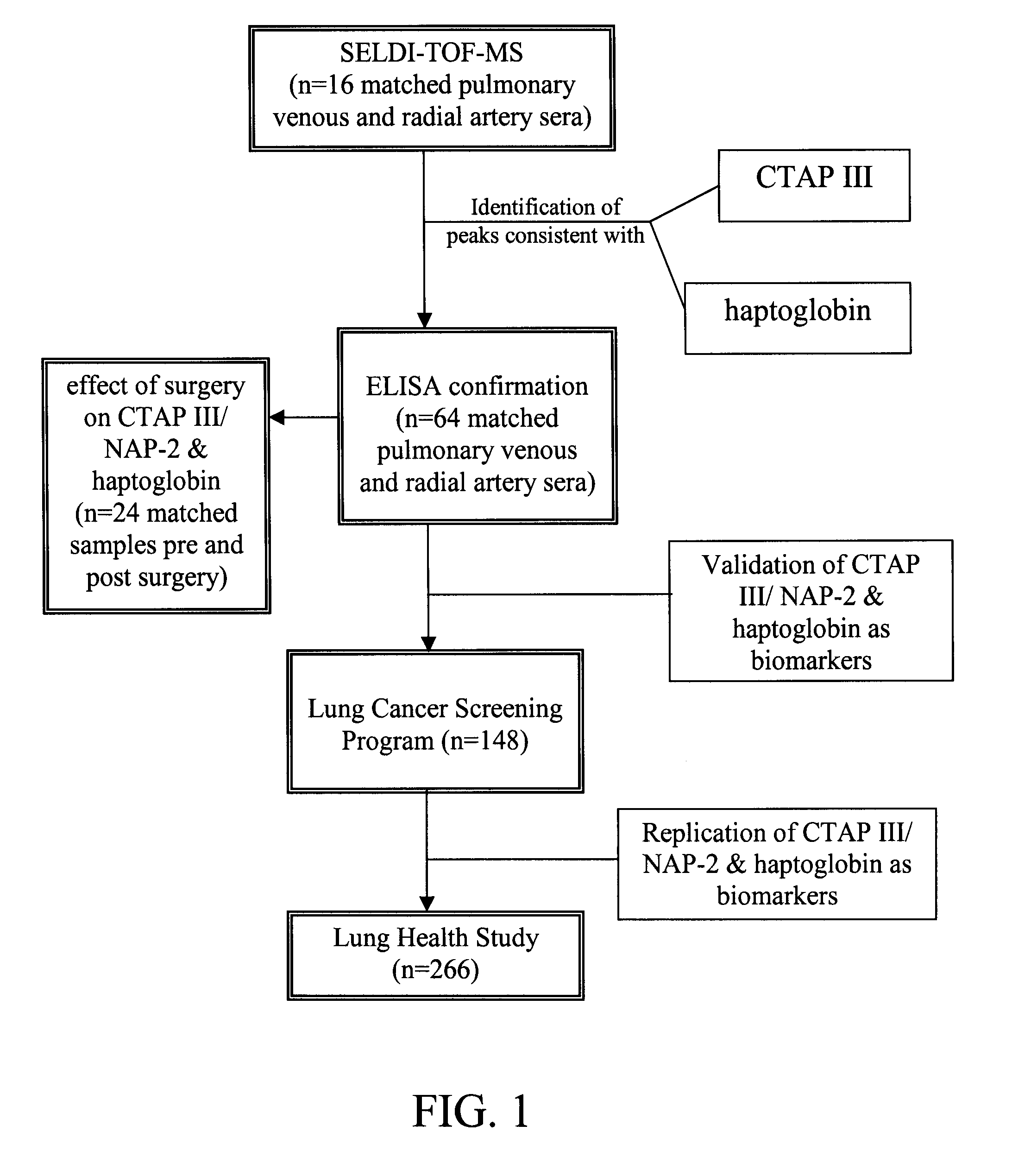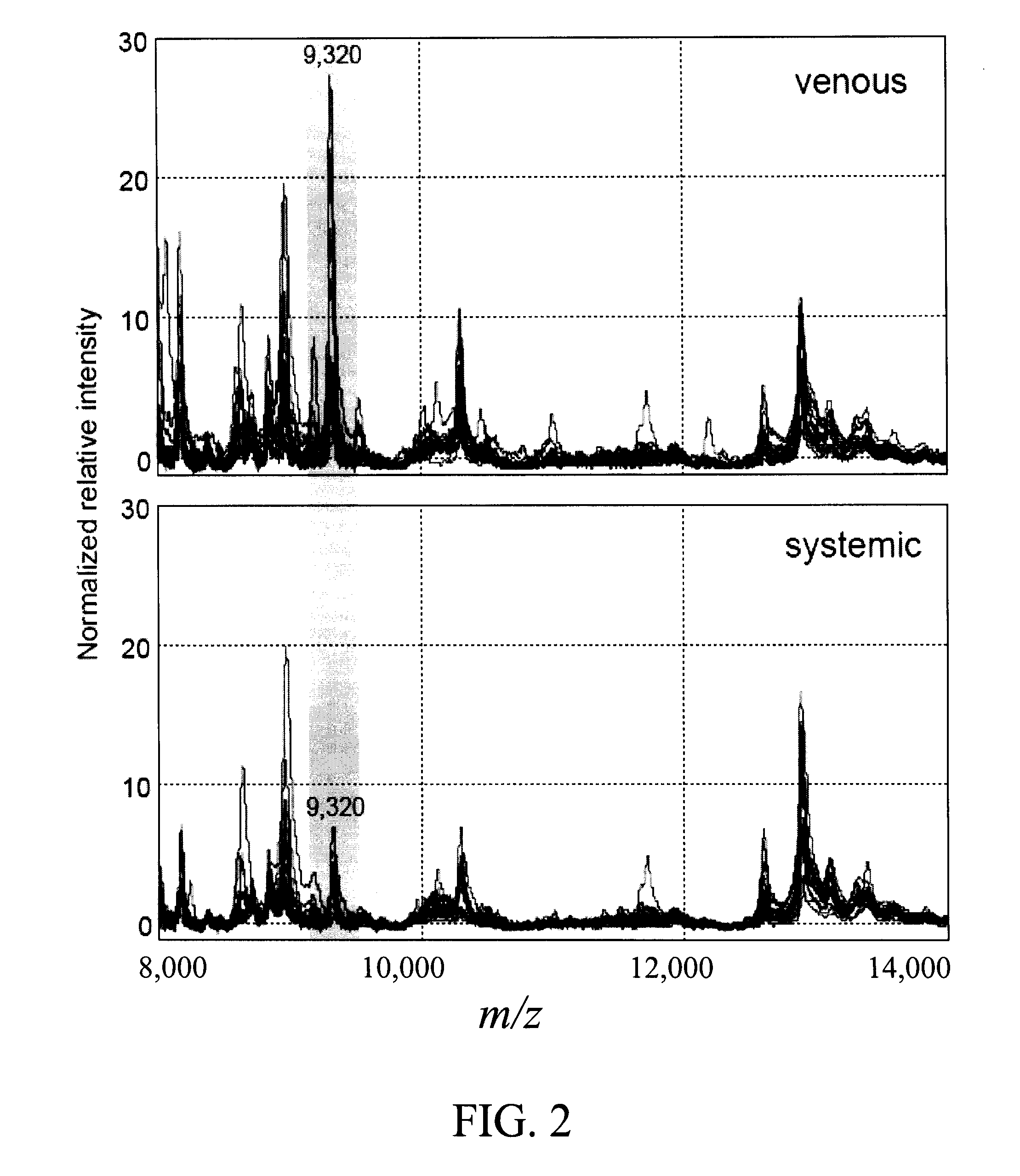Methods for detecting lung cancer and monitoring treatment response
a lung cancer and treatment response technology, applied in the field of lung cancer detection and treatment response monitoring methods, can solve the problems of not being specific enough to allow practical or cost-effective application in identifying early lung cancer in the general population, comparatively more expensive and time-consuming than spiral
- Summary
- Abstract
- Description
- Claims
- Application Information
AI Technical Summary
Benefits of technology
Problems solved by technology
Method used
Image
Examples
example
Determination of CTAP III-Related Biomarkers
[0080]Methods
[0081]FIG. 1 outlines the study design. At the time of thoracotomy and resection of the tumor, two blood samples were obtained: 1) from the lobar pulmonary vein that received drainage directly from the tumor containing lung segment that should contain the highest concentration of a candidate biomarker; and 2) from the radial artery which represents the systemic circulation. Serum samples from pulmonary venous and systemic blood were fractionated and analyzed using surface-enhanced laser desorption ionization time-of-flight mass spectroscopy (SELDI-TOF-MS). Levels of two proteins were significantly increased in pulmonary venous compared to systemic blood from the radial artery. These proteins were identified as Connective Tissue-Activating Peptide III (CTAP III) and haptoglobin using tandem MS (MS / MS). Enzyme-linked immunosorbent assay (ELISA) was used to validate that the proteins identified were differentially expressed betwe...
PUM
| Property | Measurement | Unit |
|---|---|---|
| pH | aaaaa | aaaaa |
| pH | aaaaa | aaaaa |
| monoisoptopic mass | aaaaa | aaaaa |
Abstract
Description
Claims
Application Information
 Login to View More
Login to View More - R&D
- Intellectual Property
- Life Sciences
- Materials
- Tech Scout
- Unparalleled Data Quality
- Higher Quality Content
- 60% Fewer Hallucinations
Browse by: Latest US Patents, China's latest patents, Technical Efficacy Thesaurus, Application Domain, Technology Topic, Popular Technical Reports.
© 2025 PatSnap. All rights reserved.Legal|Privacy policy|Modern Slavery Act Transparency Statement|Sitemap|About US| Contact US: help@patsnap.com



